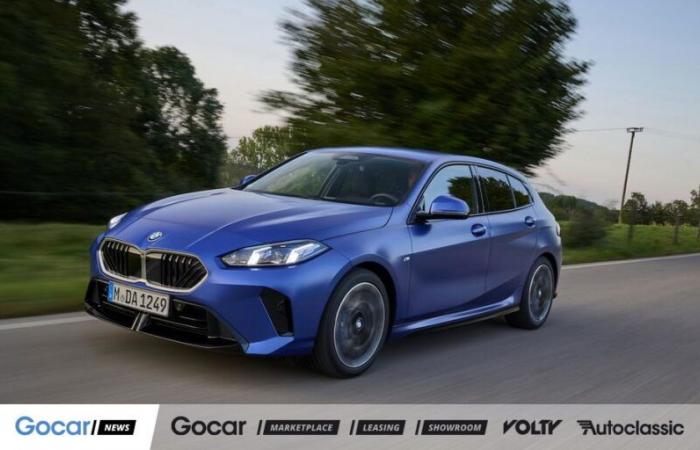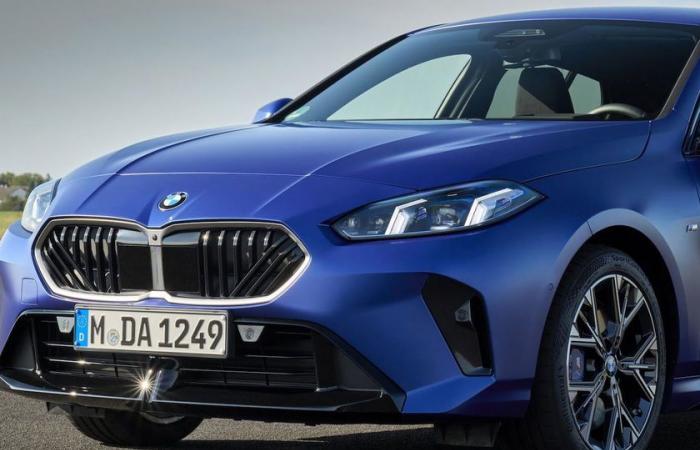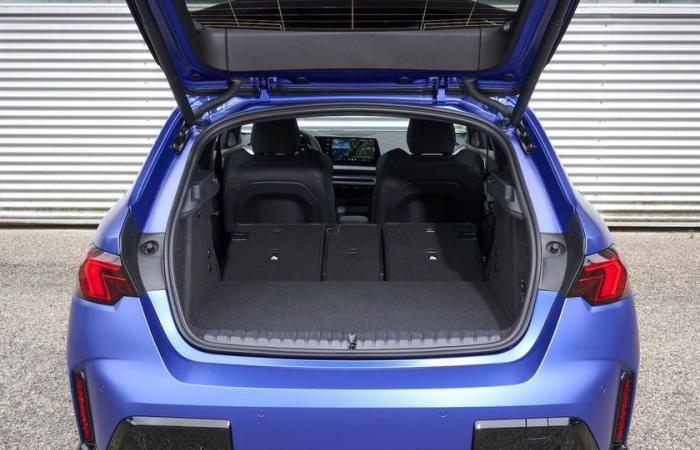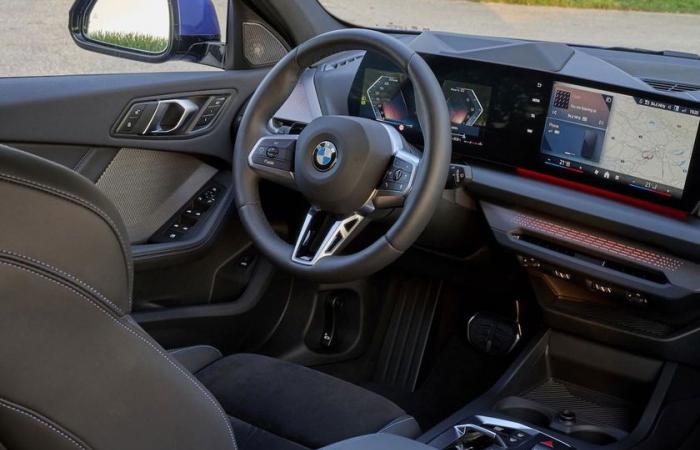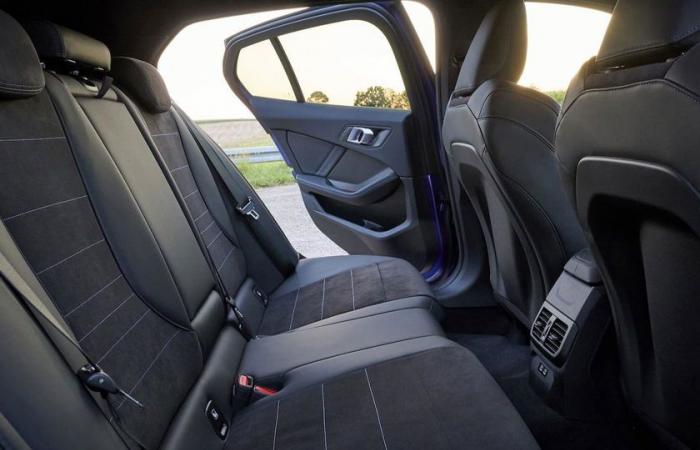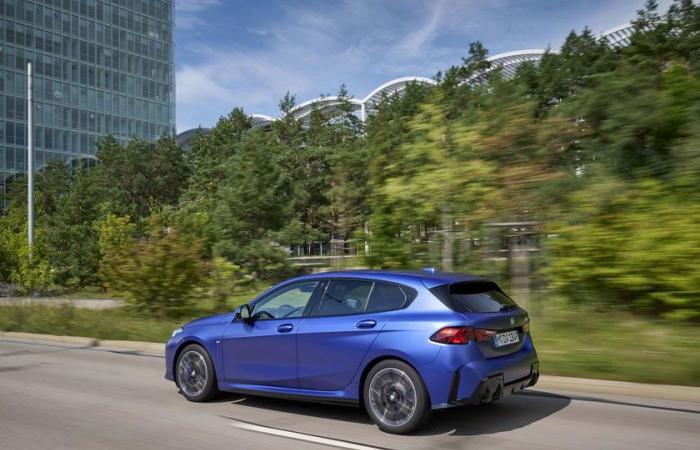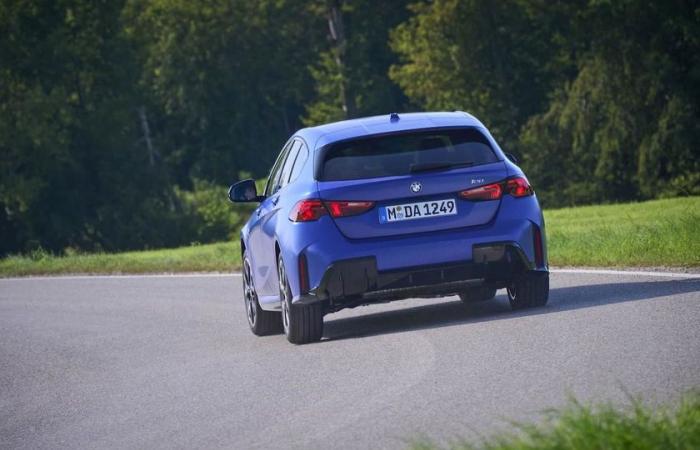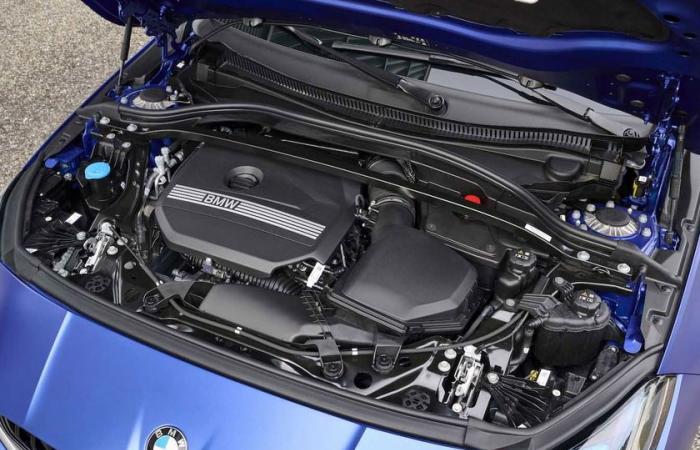The BMW Series 1 has occupied the premium compact market since 2004, that’s 20 years ago. A great career and which, initially, wanted to differentiate itself in the segment with a propulsion architecture which necessarily spoke to fans of the brand and of driving in general. Except that since 2019, BMW has changed its approach for cost reasons. From now on, the “1” shares its underside with those of Mini and it has therefore moved to the front wheel drive. A radical decision, but motivated by the fact that a majority of buyers of the model were unaware of the architectural characteristics.
Five years after the launch of the first “traction” generation (F40), a new version is introduced. Her code name F70 suggests that it is a brand new Series 1, but in fact we can rather talk about deep restylingbecause the platform and wheelbase are identical. The length gains 4 cm on the shields, but the height also increases by 2.5 cm, which demonstrates the work put into this new generation. A reality confirmed moreover with the new dashboard.
A typical line
Aesthetically, we have no difficulty recognizing this Series 1 which takes on the appearance of the one which preceded it. The evolution in style is therefore not obvious with a more refined front face with a lowered hood, but also a grille which – and this is welcome – has stopped swelling. It remains significant, but it is more stretched in width. The optics adopt a completely new design, both at the front and at the rear. But for the rest, there is no big change.
Advertisement – continue reading below
Translated into dimensions, this new Series 1 now measures 4.36 m, representing an increase in length of 4 cm and 1.46 m in height. The wheelbase has, as we said, remained the same. As a result, the habitability characteristics evolve only slightly. The interior space is therefore correct, nothing more and it remains, as before, limited at knee and head level for the two rear passengers. Note also that you have to sit low on the bench seat and that the door openings are not the widest. The space of loading is inferior to what is offered elsewhere, at least in the microhybridization versions: 300 litrescompared to 370 for a Mercedes A-Class and even 420 liters for an Audi A3. So it’s not much. The versions without mild hybridization offer 380 liters. Fold the banquette allows you to change the volume to 1.135 litres. On the other hand, there are certain refinements that are rather rare for the category, such as a motorized tailgate.

Neat
The interior of this Series 1 leaves you with a taste of something new, which is explained by the adoption of a brand new dashboard which also adopts the recipe of the double curved slab, one for the meters and the other, for the infotainment system. In this, the Series 1 falls into line. The interface is that which prevails for the other models in the range. We therefore find ourselves with software and very extensive functionalities (which even manage video games), but menus also quite longs to unfold. Observation: theinterface often reveals slowness in its reactions and this applies as much to the icons displayed on the screen as to shortcuts placed between the two panels (Navi, Audio, Tel, etc.). As required in Europe, the driving aids are reactivated each time you start, but fortunately, BMW has provided a small switch on the central console which allows direct access to this configuration. Unlike other models in the range, you can only use the touch screen to navigate the menus, because the rotary wheel has disappeared. Savings!

The passenger compartment offers quite a few storage spaces. storage and we particularly appreciate the large accommodation provided for the reception and recharging of the cell phone which can, whether it runs Android Auto or Apple Car Play, be connected wirelessly to the interface. The choice of coverings and quality of assembly and finish do not suffer criticism and they reflect the premium pedigree of the model. Please note, however, that for reasons of durability, leather upholstery is no longer offered. Note that the coverings are now made of fabric, imitation leather or Alcantara.

A simplified mechanical offer
BMW has simplified the mechanical offer. The 118i, 128 ti and 116d have left the scene and are giving way to the 116 (120 hp, 230 Nm), 120 (this test, 170 hp, 280 Nm), 123 xDrive (218 hp, 360 Nm), 135 xDrive (300 hp, 400 Nm), 118d (150 hp, 360 Nm) and 120d (163 hp, 400 Nm). Only versions 120 et 120d are at this stage provided with a microhybridation (20 hp electric motor and 0.9 kWh battery) which reduces engine effort. This helps relieve the load and therefore the consumptionbut not to drive 100% electric. Note that from a marketing point of view, BMW is also abandoning the “i” which followed the name of the gasoline engines so as not to overshadow the electric models (and called “i”). However, the brand retains the “d” to distinguish the Diesel versions. It should also be noted that BMW no longer offers any manual gearbox, but only the 7-speed DKG roboticregardless of the engine considered. Here too, it is an evolution in the range, probably motivated both by the habits of the public, but also for simplification – and savings – in development and production.
Currently, there is no electric version planned. According to several sources, it appears that thei1 should not happen before 2028 and that she would then use the platform New class which will be used for the next i3 (electric derivative of the 3 Series) and the future iX3 which should arrive at the end of 2025. If all goes well.
3 cylinders and you can hear it
It is the 120 which passed on the test bench, a microhybridization version therefore which provides 170 hp and 280 Nm taken from a 3 cylinder supercharged of 1.5 liters (i.e. 156 hp for the thermal engine plus the 20 hp of the electric motor). Because yes, the 2 liter has been over for a long time for reasons of CO2 emissions. In use, the fact that the engine only has 3 legs is noticeable by a characteristic sound that is less noble than that of a 4-cylinder. We get used to it – but do we have a choice? Therefore, the sound volume appears a little pupil during transitional phases (accelerations), but fortunately appears to be perfectly controlled at a stabilized speed. What is appreciated is the perfectly flexible character of this 1.5 which is sufficiently alert from the lowest revs where, something also rare, it does not cogne or does not vibrate unintentionally.

The dynamism of 3 cylinders is therefore completely real. Because it provides acceleration if not sharp at least linear and imprinted with a certain tone. The performance figures bear this out: 0-100 km/h is completed in 7.8 seconds. There DKG box is gentle and sufficiently fast, except during the phases of ” take off » – i.e. startup – where it shows itself spring to react, a bit as if she was hesitating whether to go or not (even though the instructions on the right pedal are clear). It’s annoying, particularly when restarting in roundabouts or at traffic lights.
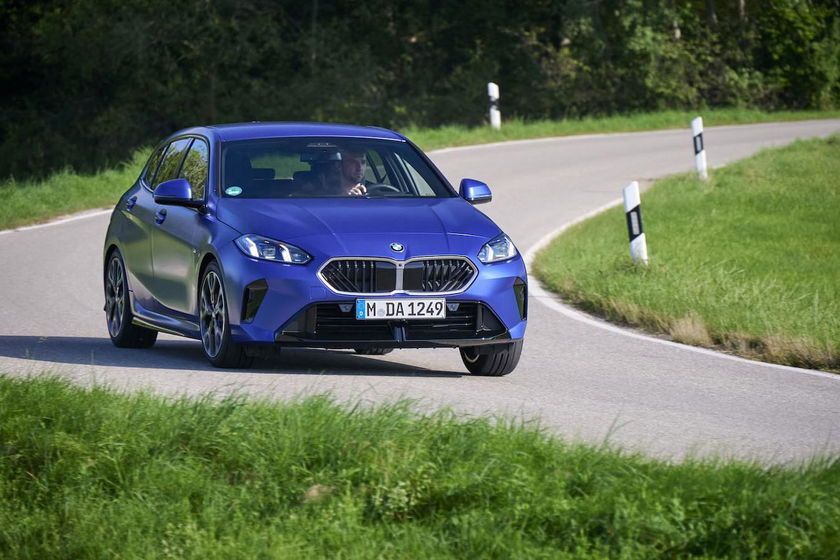
BMW announces a average consumption WLTP between 5.3 and 5.5 l/100 km. This is theoretical, but not unrealistic since by adopting a legal-looking flow pattern, we have noted 6 l/100 km. A very nice score which therefore allows us to consider stages of just over 800 km. Well, long-haul status is certainly not the prerogative of the 120, but this reference says a lot about its energy efficiency. Drivers who operate mainly in town will be able to count on an average of 6.7 l/100 km which remains more than acceptable for a petrol engine of this power.
Dynamic
On the road, we immediately feel good in this new Series 1. The driving position is perfect (and perfectly adjustable for all sizes) while we immediately perceive the seriousness and rigor of the development. BMW announces a hull slightly stiffened and ground connections modified with the objective of greater agility. This is the case and even more so in our M-Sport finish which benefits from the M suspension and other tricks, such as a quick manual program for the gearbox and which also offers long paddles on the steering wheel (in fact, briefly holding the left one towards you allows you to switch to Sport mode for ten seconds, to overtake for example).
To answer the question: yes, the driving pleasure is present. It is the fact of a direction superbly reworked, precise, linear and incisive which does not (and no longer) allow itself to be parasitized by torque effects. THE overall behavior is also pleasing with its cornering balance amusing : the front axle carves the trajectory while the rear axle leaves with a certain latitude of stall when lifting the foot, but always in a gentle and progressive manner (and without the connected ESP spoiling everything).

Note that for the M versions, depreciation is no longer adaptive as before. BMW has opted for fairly firm settings which, although they hold the body perfectly when cornering, nevertheless prove to be quite restrictive for the lumbar on damaged roads. Might as well know it. The “non-M” versions are certainly much more forgiving.
Chic
Premium model obliges, the new Series 1 is rather expensive. But that’s no surprise. Count 36.800 euros for this 120 and already 32,300 euros for the entry-level 116. At the top, the M135 xDrive is billed 56,450 euros. You have to be able to put them on and, above all, add to the bill with useful equipmenteven if the basic equipment is already correct with heated front seats, automatic air conditioning, cruise control and even navigation as standard for all versions. Among the options to check, there is certainly the Premium pack which brings together keyless access, adaptive LED lights, the wireless charging box for the cell phone and the “mirror” pack. There is also the 3-part folding rear seat (210 euros), the front sports seats (390 euros), the panoramic roof (1,210 euros) or the driving aids (between 820 and 2,040) knowing that the latter work overall GOOD.

Conclusion
The Series 1 returns in an improved version, but which does not absolutely revolutionize anything. Its strongest argument is its driving pleasure and precision as much as its vitality with this 20 engine. For the rest, it does not change from the chic averages of the market: perfect finish, state-of-the-art equipment, but also habitability average and high price. It’s almost a tradition.
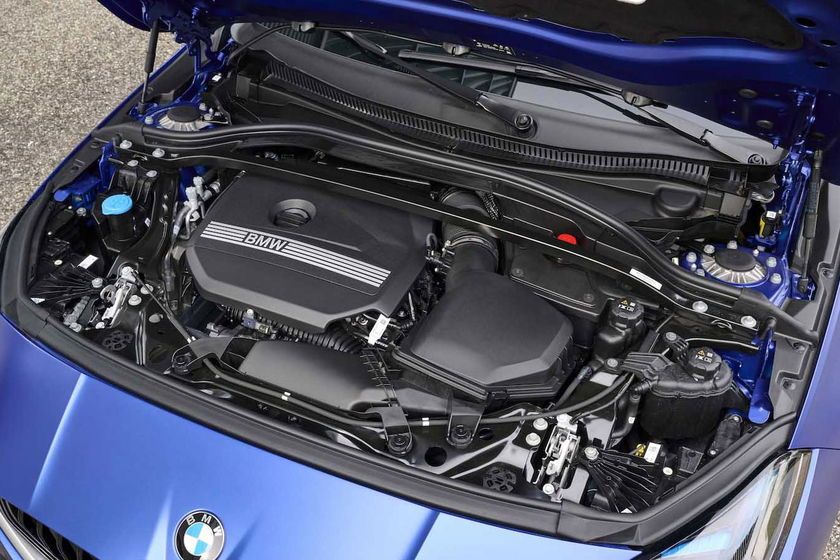
BMW 120 (2024): specifications
Engine: petrol, 3 cylinders, 1,490 cm3, 1 electric motor (20 hp and 0.9 kWh battery) for 170 hp and 280 Nm
Transmission: to the front wheels
Gearbox: robotic double clutch, 7 speeds (DKG)
L/l/H (mm) : 4.361 / 1.800 / 1.459
Empty weight (kg): 1,500
Luggage compartment volume (l): 300 – 1,135
0 to 100 km/h (sec): 7.8
Top speed (km/h) : 226 km/h
WLTP combined consumption (l/100 km): 5.3 – 5.5
CO2 : 121 – 124 g/kms
Price: 36,800 euros
Registration tax: Flanders: 194.59 euros; Wallonia and Brussels: 1,239 euros
Driving tax: Flanders: 225.98 euros; Wallonia and Brussels: 295.01 euros
Écomalus Wallonia: 0 euro
- Driving pleasure
- Very economical engine
- Finishing
- Average habitability
- Sound engine, imperfect DKG box (take off)
- High price
Looking for a car? Search, find and buy the best model on Gocar.be

